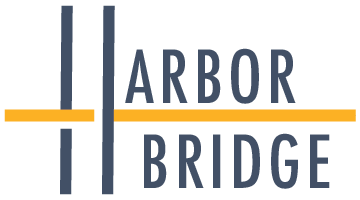The Power of Active Listening: Unlocking Success Through Connection
Something my dad taught me in high school was that to stand out in the classroom, I should look at the teacher and subtly nod while they were talking. Perhaps a bit contrived and even a bit misleading when I didn’t actually understand the material, but it taught me something important: people want to know they’re being heard.
Over the years, through study and practice, I’ve learned how to use listening not to get ahead in the classroom, but to authentically build trusting relationships and make a space to foster learning, collaboration and innovation. Active listening is more than just hearing words; it’s about understanding, empathizing and responding appropriately to enhance communication and connection.
Whether you’re navigating complex team dynamics, building client relationships or simply looking to improve your personal interactions, honing your active listening abilities is a critical step toward achieving these goals.
Why is Active Listening essential in all professions and at all levels?
Trust and Deeper Connections: Active listening creates an environment of trust and openness, fostering stronger relationships with your team, peers and stakeholders.
Enhanced Problem-Solving: By actively listening to different perspectives and ideas, both you and the speaker can gain valuable insights and diverse viewpoints. This enables better problem-solving and decision-making, as you can tap into your collective intelligence and identify innovative solutions.
Psychological Safety: Active listening makes people feel heard, valued and respected. When individuals feel heard, you build a psychological safe environment where people feel safe to take risks and be vulnerable, increasing engagement, motivation, communication and innovation.
Practical Tips:
To incorporate active listening, consider these actionable strategies:
Let go of the "Fixer" mindset. Focus on listening, not solving.
Give Your Undivided Attention: Eliminate distractions, let go of judgment, withhold opinions, show attentiveness through body language and non-verbal cues.
Pro tip: Put away your phone, listen with your eyes, ears, heart and intuition.
Maintain eye contact, nod and face the speaker (thanks Dad for this tip!)
Hold space and silence: Keeping your mouth shut can be uncomfortable, but giving the speaker quiet space will allow them to dig deeper into their thoughts and feelings to access profound insights. Resist the urge to fill in the gaps!
Demonstrate Empathy: Put yourself in their shoes to understand perspectives, validate feelings and experiences as a way to foster connection. Listening with empathy involves tuning into the speaker's underlying emotions, non-verbal cues and unspoken messages.
Ask Open-Ended Questions: Encourage introspection and discovery by asking powerful, open-ended questions. This helps the speaker uncover valuable insights.
Pro tip: Avoid using questions that start with “Why.” Why questions invite defensiveness, instead use open-ended questions that start with “What” and “How.” Keep the questions short. If you ramble, the question gets lost.
Clarify, Confirm: Offer clarifying questions or “echoing” what you've heard to give them speaker an opportunity for clarification, understanding and alignment.
Pro -tip: Clarifying Questions: “What do you mean? Can you say more?” Echoing: “What I’m hearing is…?”
I hope these insights and skills help you harness the power of active listening and to use it not just as a means of improving communication but as a foundation that fosters deeper connections, success and growth.
Interested in learning more about active listening and other skills? Read more about our Custom Learning and Development programs that empower both individual contributors and leaders with the skills and mindsets that unleash potential along with out Learning Library which features a comprehensive selection of all our workshops topics, including a dynamic session on Active Listening.
